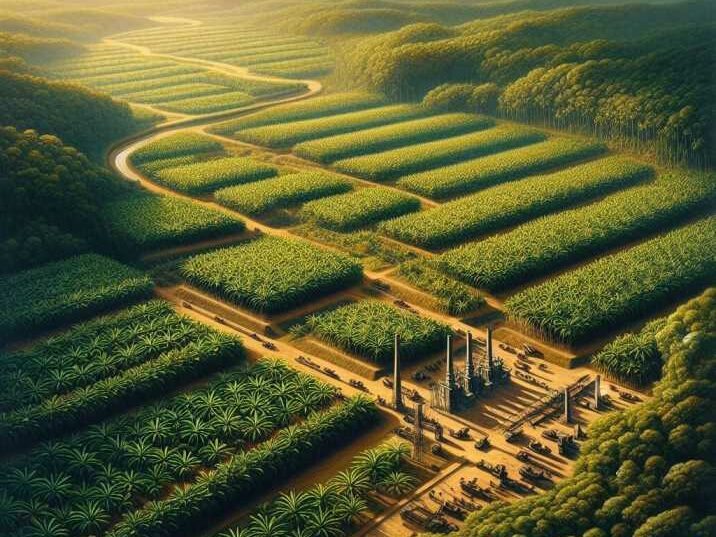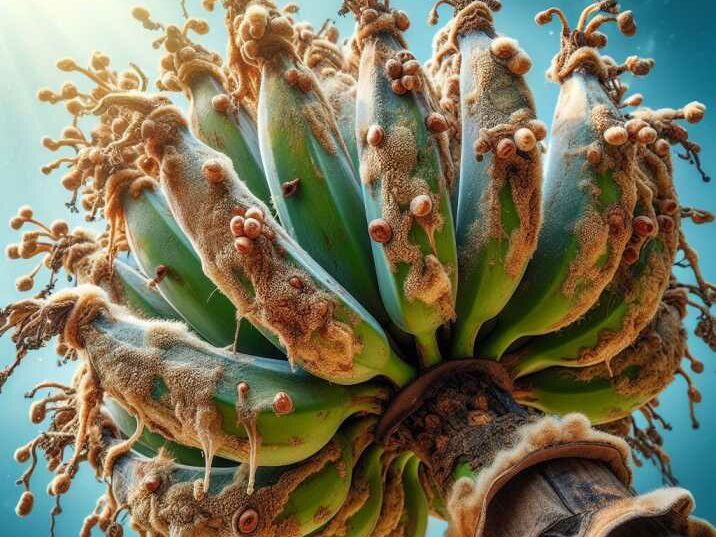Introduction:
Table of Contents
Gros Michel bananas, once a dominant force in the global market, played a significant role in shaping international trade dynamics. Originating in Southeast Asia, these bananas found their way to various parts of the world, leaving a lasting imprint on economies and commerce. Let’s delve into eight key ways Gros Michel banana cultivation impacted global trade, influencing markets, economies, and agricultural practices.

1. Introduction to Gros Michel Bananas:
Gros Michel bananas, known for their robust flavor and sturdy skins, were the primary banana variety cultivated and traded globally until the mid-20th century. With a sweet taste and firm texture, they quickly gained popularity among consumers worldwide.
2. Expansion of Gros Michel Banana Cultivation:
The demand for Gros Michel bananas led to the establishment of extensive plantations across tropical regions, particularly in Central America and the Caribbean. These plantations became economic powerhouses, driving employment and infrastructure development in their respective areas.
3. Rise of Banana Republics:
The term “banana republics” emerged to describe countries in Central America and the Caribbean whose economies heavily relied on banana exports, primarily Gros Michel bananas. This dependency influenced political landscapes and foreign interventions in the region.
4. Impact on Global Trade Routes:
The cultivation of Gros Michel bananas influenced global trade routes, leading to the development of specialized shipping routes and infrastructure to transport perishable goods efficiently. Ports and shipping companies experienced a surge in activity due to the demand for bananas.
5. Market Dominance and Monopolies:
Large corporations, known as banana companies, monopolized the Gros Michel banana trade, controlling vast plantations and distribution networks. This dominance gave rise to labor disputes, environmental concerns, and economic inequalities in banana-producing regions.
6. Disease Threats and the Panama Disease Outbreak:
The vulnerability of Gros Michel bananas to Panama disease, a fungal infection, posed a significant threat to global trade. The outbreak of Panama disease devastated Gros Michel plantations, leading to widespread crop losses and economic repercussions.

7. Shift to Cavendish Bananas:
In response to the Panama disease outbreak, the banana industry shifted its focus to cultivating Cavendish bananas, which were resistant to the fungal infection. This transition reshaped the global banana trade landscape, marking the decline of Gros Michel bananas.
8. Legacy and Cultural Impact:
Although Gros Michel bananas are no longer commercially viable on a large scale, their legacy persists in cultural references, culinary traditions, and historical narratives. The impact of Gros Michel cultivation on global trade serves as a reminder of the interconnectedness of economies and the resilience of agricultural industries.
Table of Information about Gros Michel Banana Cultivation:
| Impact | Description |
|---|---|
| Expansion of Banana Plantations | Establishment of extensive plantations in tropical regions, driving economic growth and infrastructure development. |
| Rise of Banana Republics | Emergence of countries reliant on banana exports, influencing political landscapes and foreign interventions. |
| Impact on Global Trade Routes | Development of specialized shipping routes and infrastructure to transport perishable goods efficiently. |
| Market Dominance and Monopolies | Control of banana trade by large corporations, leading to labor disputes, environmental concerns, and economic disparities. |
| Disease Threats and Panama Disease | Vulnerability of Gros Michel bananas to Panama disease, causing widespread crop losses and economic disruptions. |
| Shift to Cavendish Bananas | Transition of the banana industry to cultivating Cavendish bananas due to their resistance to Panama disease. |
| Legacy and Cultural Impact | Persistent influence of Gros Michel bananas on culinary traditions, cultural references, and historical narratives. |
Conclusion:
The Gros Michel Banana cultivation left an indelible mark on global trade, influencing market dynamics, economic systems, and cultural practices. From the rise of banana republics to the emergence of specialized trade routes, the legacy of Gros Michel’s cultivation continues to shape the way we understand the interconnectedness of the global economy.
FAQs (Frequently Asked Questions):
1. What made Gros Michel bananas so popular?
- Gros Michel bananas were favored for their sweet flavor and firm texture, appealing to consumers worldwide.
2. How did the Panama disease outbreak affect Gros Michel cultivation?
- The Panama disease outbreak devastated Gros Michel plantations, leading to widespread crop losses and economic repercussions.
3. Why did the banana industry shift to Cavendish bananas?
- The banana industry transitioned to cultivating Cavendish bananas due to their resistance to Panama disease, ensuring greater crop stability.
4. What are banana republics, and how did they relate to Gros Michel cultivation?
- Banana republics were countries in Central America and the Caribbean whose economies relied heavily on banana exports, particularly Gros Michel bananas.
5. What is the cultural legacy of Gros Michel bananas?
- Despite their commercial decline, Gros Michel bananas remain a cultural reference point in culinary traditions and historical narratives, reflecting their significant impact on global trade.
